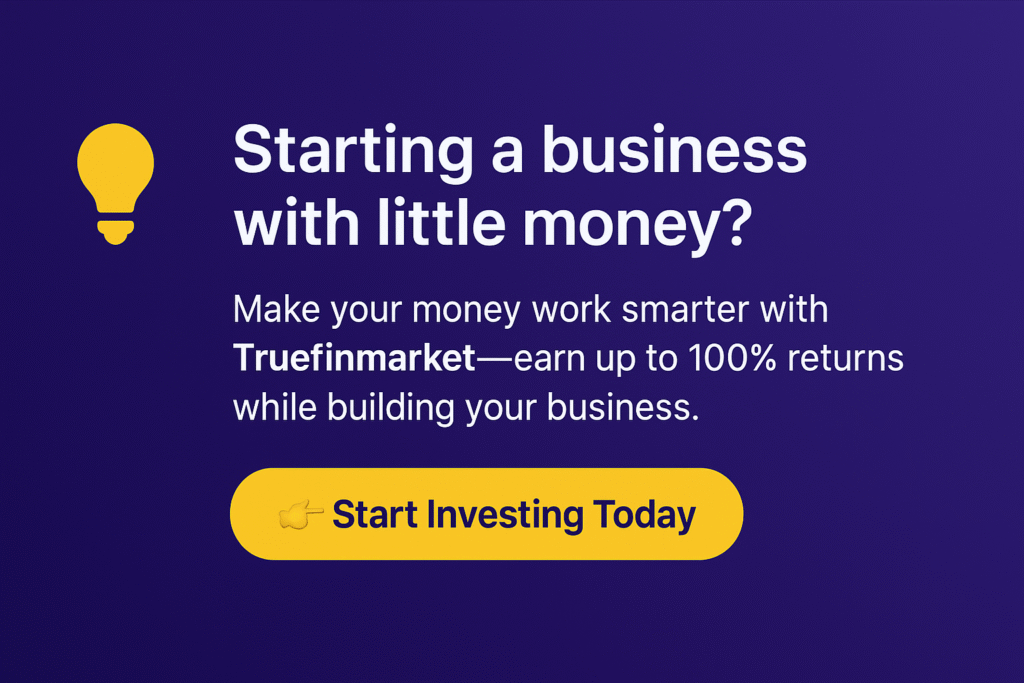Starting a business doesn’t always require deep pockets. In 2025, more than ever, low-cost and flexible business models are thriving—many of which you can launch with minimal financial investment. Here are 10 profitable ideas, each backed with real-world examples to show what’s possible.
1. Dropshipping
Set up an online store and partner with suppliers who ship directly to customers. You handle marketing and sales without managing inventory.
Case Study: Sarah, a 26-year-old student in Manchester, launched a dropshipping store selling eco-friendly water bottles. With just £150 for a Shopify subscription and Facebook ads, she made her first £1,000 in profit within two months.
2. Print-on-Demand (POD)
Create designs for t-shirts, mugs, phone cases, and more. Products are only printed when ordered, so you avoid stock costs.
Case Study: In the US, a side-hustler named Chris started uploading simple slogan designs to Printful. One of his funny gym shirts went viral on TikTok, earning him $10k in six weeks.

3. Digital Products
Sell downloadable items like e-books, templates, or guides. With no physical inventory or shipping, digital products offer high margins.
Case Study: Amelia, a freelance designer, packaged her Canva templates into an Etsy shop. She spends a few hours a month updating listings but now earns about £800/month passively.
4. Service-Based Business
Offer skills you already have—consulting, writing, design, or virtual assistance. All you need is your expertise and an internet connection.
Case Study: David, who had no formal background in business, started offering LinkedIn profile writing services. Within six months, he had a steady stream of clients paying £200–£300 per project.
5. Online Tutoring or Teaching
Teach a subject you know well, whether it’s maths, languages, or coding. Platforms like Zoom make global teaching possible.
Case Study: Priya, a fluent Spanish speaker, started offering online tutoring at £15/hour. In less than a year, she replaced her part-time café income while working from home.
6. Affiliate Marketing
Earn commissions by promoting other people’s products. You can use a blog, YouTube channel, or social media.
Case Study: Alex started a blog about tech gadgets. By reviewing laptops and linking to Amazon, he grew his blog to $2,500/month in affiliate income within a year.
7. Reselling Digital Assets
Sell stock photos, music tracks, or even niche website templates. Once created, they can be sold over and over.
Case Study: Jenna uploaded her travel photos to Shutterstock. Today, she earns $300–£400 each month in royalties—enough to cover her phone bill and utilities.
8. Podcast Editing or Coaching
With podcasts booming, many creators need help editing audio or structuring their shows.
Case Study: Marcus, a music graduate, started offering podcast editing for £50 per episode. Word-of-mouth spread quickly, and now he manages editing for 10 regular podcasters.
9. Handcrafted Goods or Market Stall
If you’re creative, sell your crafts online or at local markets. Market stalls are affordable and provide direct customer feedback.
Case Study: Sophie, a jewellery maker, began selling her handmade earrings at a weekend market for £30 a stall. Today, she’s grown into a full-time Etsy shop owner with consistent sales.
10. AI Tutoring or Creative Services
Leverage tools like ChatGPT or MidJourney to provide tutoring, writing, or content creation. AI can help speed up delivery while keeping costs low.
Case Study: Liam offers “AI-powered resume writing” for job seekers. Using AI tools plus his editing, he charges £50 per CV and now averages £2,000/month in side income.
Why These Ideas Work
These business models succeed because they’re low-risk, flexible, and scalable. You don’t need a massive budget to get started—just time, creativity, and consistency.
Next Steps to Take Today
- Pick one idea that aligns with your skills or interests.
- Test it quickly with free or low-cost tools (Shopify free trial, Canva, Etsy, Upwork, or social media).
- Get real feedback from your first customers.
- Refine your offer and scale gradually.
Final Thought
You don’t need funding to start something real. Whether it’s dropshipping, selling digital goods, or offering services, there are endless low-cost paths to entrepreneurship. The key is to start small, learn as you go, and keep building.
Leave a Reply